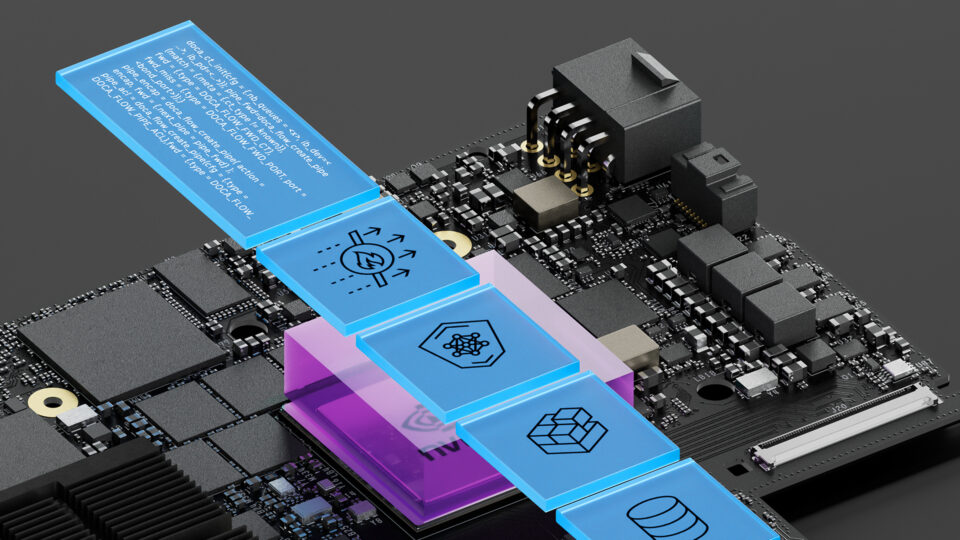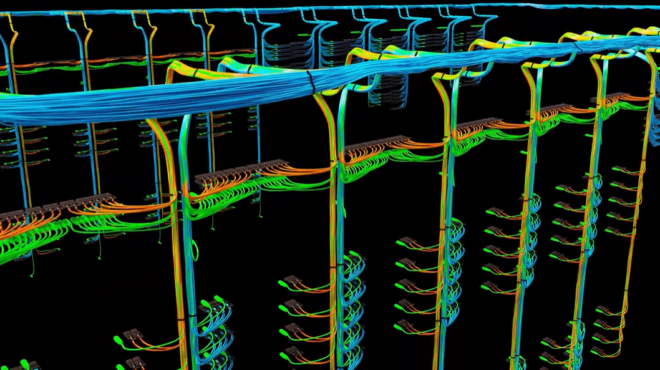In today’s data-driven world, security isn’t just a feature—it’s the foundation. With the exponential growth of AI, HPC, and hyperscale cloud computing, the integrity of the network fabric is more critical than ever. And while many networks add security features almost as an afterthought, security extends across every layer of NVIDIA Quantum InfiniBand.
InfiniBand is well-known in performance circles for its ultra-low latency, high throughput, and massive scalability. This post explains its robust, multilayered approach to security, which is often less recognized.
How is InfiniBand engineered for security?
Central to InfiniBand is a software-defined, centrally managed fabric. In traditional networking, endpoints often operate independently, making their own routing, resource, and policy decisions. This lack of centralized oversight can lead to misconfigurations, inconsistent policies, and security vulnerabilities. InfiniBand avoids this by centralizing control in the Subnet Manager (SM), which enforces global policies, optimizes routes, monitors health, and proactively secures the fabric. This security-first approach is embedded at every layer of the InfiniBand architecture.
How does InfiniBand control access?
Instead of relying on complex cryptographic protocols to secure every byte (which can impact speed), InfiniBand uses purpose-built key mechanisms that act like secure access tokens. These keys don’t encrypt data; instead, they ensure that only authorized devices and trusted applications can participate in the network.

Here’s how the key system works:
- M_Key: Management key that prevents rogue hosts from altering device configurations. If the key doesn’t match, the request is dropped.
- P_Key: Partition key analogous to VLANs. These keys define which devices can “see” or talk to each other, creating strict traffic isolation across the fabric.
- Q_Key: Secures unreliable datagram traffic by requiring key validation on each packet.
- L_Key and R_Key: Protect memory in RDMA operations, ensuring only authorized nodes can read or write to memory, which is critical for modern zero-copy operations.
All of these keys are hardware-enforced by the InfiniBand network adapter or switch ASIC, meaning even root access on a compromised server can’t override them. This provides a very high level of security.
How does InfiniBand prevent spoofing, impersonation, and hijacks?
InfiniBand takes hardware identity seriously. Every node and port comes hard-coded with a Global Unique Identifier (GUID), making spoofing nearly impossible. In addition, the SM supports static topology files, where admins can define expected device GUIDs and port connections. If something doesn’t match, connectivity is not permitted.
The SM can also maintain an “allowed SM GUIDs” list, protecting against rogue subnet managers trying to take control. And with SMP firewalls, admins can lock down management traffic even in bare-metal or multi-tenant environments.
InfiniBand partitioning is stronger than VLANs
Ethernet VLANs are good, but they’re software constructs. InfiniBand partitioning is enforced at the silicon level. Admins define partition groups in the NVIDIA Unified Fabric Manager (UFM), and those definitions are pushed to every switch and network adapter.
Within a partition, traffic is allowed according to membership level:
- Full members can talk to anyone in the partition
- Limited members can only talk to full members
This structure keeps noisy tenants, rogue apps, or compromised systems from talking to resources they shouldn’t even know exist.
InfiniBand secures memory and transport without software
InfiniBand transport layers—Reliable Connected (RC), Unreliable Datagram (UD), and Dynamically Connected (DC)—are implemented in the hardware. That means no software stack vulnerabilities or kernel bypass hacks.
In RC and DC modes, devices establish connections through a handshake process handled by hardware and managed by the SM. If a message doesn’t follow the expected path, fails a CRC, or shows an invalid sequence number, it’s instantly dropped.
Meanwhile, remote direct memory access (RDMA) is secured using R_Keys, which are tied to specific protection domains and the queue pairs (QPs) that initiate communication. Each QP operates within a defined protection domain, and only has access to memory regions registered within that domain. If an incoming packet presents a memory key (R_Key) that doesn’t match what the destination QP and protection domain expect, the hardware silently discards it. This mechanism prevents unauthorized reads and writes, even in the face of an active attack.
Management built for security at scale
InfiniBand management is both powerful and secure. The SM communicates with devices using management datagrams (MADs), each protected by class-specific keys. These include:
- SA_Key: For sensitive operations in the Subnet Administrator (adding or removing records, for example)
- VS_Key: For vendor tools like ibdiagnet
- C_Key and N2N_Key: Secure communication manager traffic and node-to-node messaging
- AM_Key: Specific to SHARP aggregation, ensuring data is only reduced by authorized switches
With key rotation, per-port key scoping, and configurable lease periods, admins can tailor protection without compromising performance. Even with controls in place, visibility into what’s happening across the fabric is key.
Traps and telemetry
InfiniBand is deeply observable. Management agents on each device send traps when anything unusual happens, including protocol violations, unexpected reboots, topology changes, and more. These are sent directly to the SM or exposed in the UFM dashboard. This real-time visibility means you’re not just protected, but you’re informed and ready to act.
Built-in automation, policy control, and auditability
NVIDIA provides a wide range of options for admins looking to harden their InfiniBand environments. A few best practices include:
- Enabling per-port keys for M_Key, SA_Key, and others
- Enforcing partitioning by tenant, using limited membership
- Using SMP firewalls on bare-metal hosts to block impersonation attempts
- Defining and maintaining a static topology file to guard against spoofed devices
- Turning on periodic MAD key updates to keep key material fresh
All of this is manageable through UFM or REST APIs for built-in automation, policy control, and auditability.
Designed for the demands of modern AI data centers
Security is an integral part of the InfiniBand fabric. From isolated partitions to hardened transports, encrypted key exchanges to proactive telemetry, InfiniBand provides organizations with a purpose-built, high-performance, secure-by-design network that’s ready for the most demanding workloads.
To get started and learn more, see the latest NVIDIA InfiniBand Security Overview and Guidelines.









